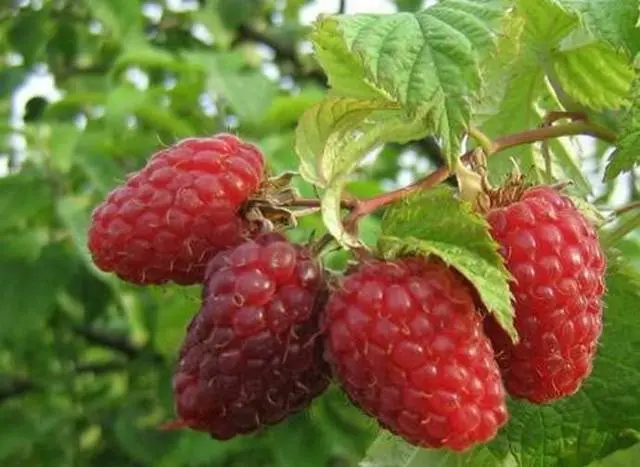Contents
It is rare that raspberries, one of the most beautiful, fragrant and healthy berries, are not grown on any personal plot. Currently, many varieties are known, both traditional and remontant. Not all of them are able to meet the diverse tastes of consumers. But there are varieties that, despite the fact that they were bred many decades ago, are still not only in demand, but also occupy quite leading positions in many respects.
These include raspberry Mirage, a description of the variety and a photo of which are presented in this article. The name of the variety may seem somewhat unexpected, but after you see the bushes of this raspberry during the fruiting period, then perhaps the thought will come to your mind that this can only be a mirage. However, this spectacle of berry-strewn bushes is a reality with a real piercing raspberry aroma of wild berries.
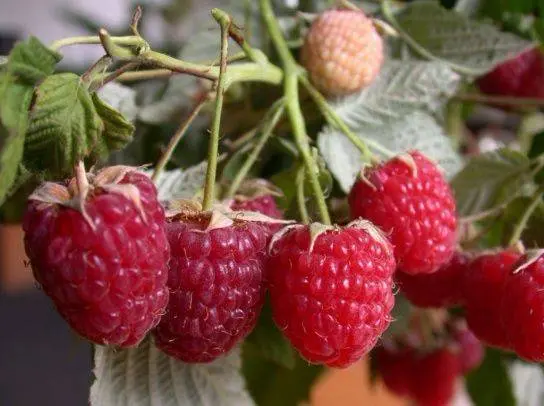
Description and history of the variety
Back in 1976, one of the outstanding breeders V.V. Kichina crossed two raspberry hybrids obtained from D. Jennings of the Scottish Horticultural Institute as part of an exchange program, 707/75 x Large Two-Rode. As a result, a hybrid form of raspberry was obtained, which began to be tested at the Kokinsky stronghold of the VSTISP and in 1978 received the code name K151.
Only since 1980, this raspberry officially acquired the status of a variety and received the name Mirage. For some unknown reason, the Mirage raspberry variety was not included in the State Register of Our Country, although it has been very popular all these years and has even been grown in some climatically suitable areas as an industrial one. At the moment, it is slightly supplanted by more productive and frost-resistant raspberry varieties, but nevertheless it has not gone out of the way and is actively used by both private gardeners and small farms.
The bushes of this variety are moderately spread out in different directions, differ in medium height, reach a height of 1,6 -1,8 meters. Fresh annual shoots have a light brown color with a red tint and a slight waxy coating without pubescence. The internodes are located at a considerable distance – after 4-7 cm. The shoots become very thin towards the top. Two-year-old shoots are distinguished, rather, by a grayish tint. Soft, straight short spikes are located along the entire height of the shoot.
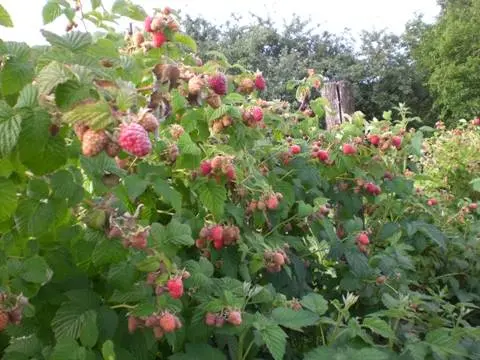
Fruitful twigs, the so-called laterals, branch out very actively. A branch can form from three to five orders of branching, each of which, in turn, carries 15-20 berries. Dark green, strongly twisted leaves of medium size are distinguished by a corrugated surface and pubescence.
The Mirage raspberry variety has a good shoot-forming ability, it forms about 9-11 replacement shoots. This is enough to successfully propagate the bushes and at the same time restrain the growth of the bushes in different directions. In addition, each raspberry bush produces about 5-8 root offspring.
Raspberry Mirage belongs to the mid-late varieties in terms of ripening. This can be very handy to fill a gap in raspberry fruiting when the early traditional varieties are already fruiting and the remontant varieties are not yet ripe. Mirage raspberry berries ripen from the end of June in the southern regions and in the second half of July in the middle lane. The crop can be harvested within about a month, for 5-6 harvests the berries will be completely harvested from the bush.
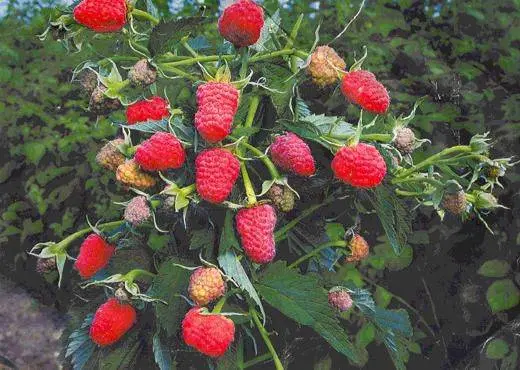
In terms of yield, the Mirage raspberry variety still occupies one of the leading positions. From one bush you can collect an average of 4-6 kg of berries. In industrial terms, this gives up to 20 tons per hectare.
Given the fact that the Mirage variety belongs to the large-fruited raspberry group, it is relatively winter-hardy in its category – it can withstand up to -25 ° -27 ° С. If young shoots are allowed to ripen well, then they do not even have to be bent down for the winter. Although in the conditions of the Moscow region, this variety can show sufficient frost resistance only if the shoots are bent down and covered for the winter.
But the Mirage raspberry is relatively drought-resistant and tolerates heat well.
The variety also shows a good degree of resistance to the main fungal and viral diseases. May be somewhat susceptible only to the overgrowth virus.
Characteristics of berries
Bright red fragrant clusters of berries, which are literally strewn with the entire Mirage raspberry bush at the time of fruiting, cannot but cause delight and surprise. Berries are characterized by the following parameters:
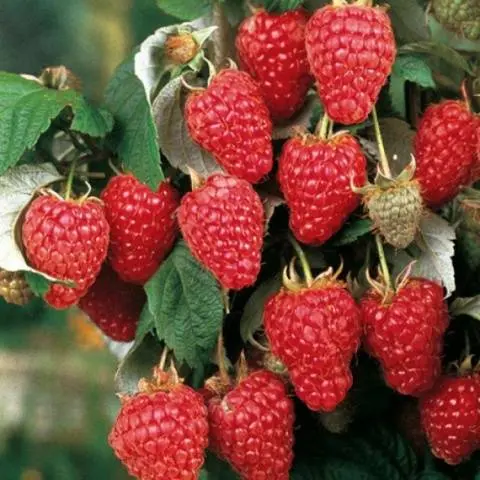
- The size of the fruit can be from large to very large: without much effort, you can get berries weighing 4-7 grams. When using intensive agricultural technology (regular and abundant watering and top dressing), the mass of berries easily reaches 10-12 grams. Especially spectacular are the berries of the very first harvest.
- The shape of the berries can be called elongated-conical.
- The berries on the bushes are quite even.
- Color – bright red, matte, without pubescence.
- The berries are not subject to shedding from the bushes or shrinking, they hold quite firmly on the stalks.
- Bones of medium size.
- The taste of berries is excellent, they are not just sweet, but dessert with a slight touch of sourness, which gives a feeling of complete harmony. An intense raspberry aroma can be felt several meters away and completes the picture.
- Even during the period of prolonged rains, the berries do not lose their sweetness and do not become watery.
- In the sun, the berry is resistant to baking, does not wither.

- The density of the berries is quite sufficient to endure a short transportation.
- The use of Mirage berries is universal, they can be eaten fresh, dried, and numerous preparations for the winter can be made from them, from compotes to jams and marshmallows.
Features of cultivation, pruning
Considering the average spreading of the bushes, when planting, up to 1,2-1,5 meters are left between them, and it is better to make row spacings about 2,5 meters wide.
Abundant mulching of bushes with organic materials will solve several problems at once: it will preserve the structure and moisture of the soil and provide additional nutrition to raspberries.
Spring pruning of raspberry Mirage is quite important, because it allows you to influence both the stability and the yield of bushes. In early spring – in April, all damaged and weak stems are removed so that no more than 8-9 shoots remain on one running meter of plantings. Then cut the tops of the stems at a height of about 1,5 meters. On other raspberry varieties, often in late May – early June, additional pruning is done to increase fruiting. The Mirage raspberry variety does not need this, since it is genetically based on the formation of many lateral fruitlets along the entire stem, and not just at its top.
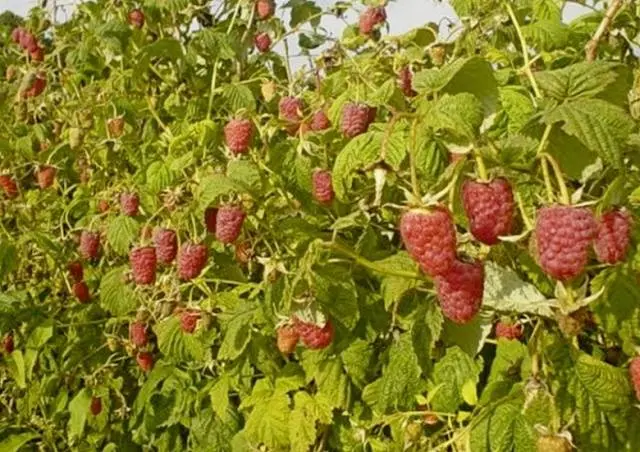
Fruiting stems should be cut immediately after the end of fruiting, without waiting for the onset of autumn, in order to minimize the spread of possible diseases and infections.
In contrast to the spring formative pruning, autumn is the time of predominantly sanitary pruning of Mirage raspberry bushes. Only broken and weak shoots are removed, given that some loss may occur during the winter due to frost.
Otherwise, standard methods are used to obtain good yields: regular watering and fertilizing: in early spring with a predominance of nitrogen, before flowering with complex fertilizer, and during budding and fruiting with a predominance of phosphorus and potassium.
Reviews of gardeners
Reviews of amateur gardeners and professionals who grow Mirage raspberries on an industrial scale can vary quite a lot. If for the former the excellent taste qualities of the berry and very good yield indicators are important, then the latter have found for themselves more winter-hardy and interesting varieties in other respects.
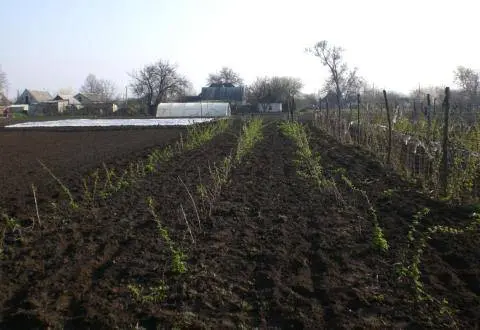
Conclusion
Raspberry Mirage may be inferior to some non-large-fruited varieties in frost resistance, but in terms of the sum of all indicators, it still remains one of the most promising varieties for cultivation.










